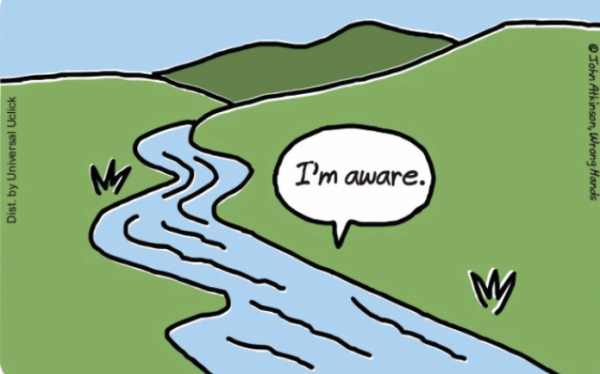Neil Harbisson, the world’s first cyborg artist
Cyborgs used to be something from a science fiction novel, from stories and fantasies, but they are quickly becoming a reality. One of the world’s first cyborg artists, Neil Harbisson is a 32-year-old artist and musician from the United Kingdom who was born colorblind. Frustrated with his inability to see color and the negative effect this was having on his art, Harbisson sought a solution to this “flaw.”
In 2003, he attended a cybernetics talk given by Adam Montandon, a student at Plymouth University. Harbisson and Montandon began working together and developed a head-mounted sensor that was capable of translating color frequencies into sound frequencies. In 2007 Harbisson met Peter Kese, a software developer from Slovenia who helped develop new software that would allow the sensor to detect not only different colors, but also different hues. When Kese was finished, Harbisson’s sensor could detect 360 distinct hues. Kese then offered to take the sensor one step further so that it could detect different levels of saturation. The sensor would convey the different hues through microtones and the levels of saturation through varying volume levels.
In May 2009, Matis Lizana, a student from Universitat Politécnica de Catalunya, developed the sensor into a chip that could easily be integrated into Harbisson’s skull. The chip was permanently attached to his occipital bone, allowing him to “see” infrared and ultraviolet, colors that are usually invisible to the human eye. Finally in 2013, an antenna was osseo-integrated inside Harbisson’s skull to remove the pressure created by the chip. The antenna is equipped with Bluetooth, which allows Harbisson to not only receive phone calls directly into his head, but also to receive colors from cameras and cell phones around him.
Today, Harbisson uses this new part of his mind, this new technology, to perform live musical and artistic pieces. Called Color Performances, they consist of Harbisson painting while his artificial eye plays the frequencies of the colors that he is using to create pieces of music. Using this technology, Harbisson fuses physical art and music in a way that no one has before. He paints while his antenna plays the music that corresponds with the colors he is using; he is literally playing physical art.
Harbisson also creates Sound Portraits, in which he listens to the colors of people’s faces. According to Harbisson, each person’s face creates an entirely unique microtone chord depending on its colors. He says that he must be standing in the presence of the person, because photographs do not do justice to the true colors of a person’s face. In order to create the sound portrait, Harbisson stands in front of his subject and points the antenna at different parts of their face, recording the different notes on a special 360 lined manuscript paper. Since he has begun making these portraits, Harbisson has painted several well-known celebrities, including Prince Charles and Leonardo DiCaprio.
Sound Portraits and Color Performances are not the only forms of art Harbisson works in, however. He also uses his sensor in the opposite manner, listening to the first 100 notes of popular musical pieces and transforming them into paintings.
To Neil Harbisson, sounds and color are so closely related they are almost one in the same. Born colorblind but with a passion for art and the color that is so closely associated with painting and expression, Harbisson began by searching for a way to experience colors like everyone else. He ended up with something more. With help from a number of colleagues, Harbisson developed a chip that was implanted into his skull, allowing his brain to turn color frequencies into sound frequencies. Although many people consider cyborgs a fiction, Harbisson now proves them wrong by working as a performing artist, experimenting in many different forms and styles, but always incorporating his artificial eye.


